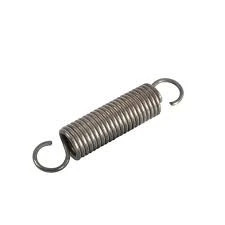
- Mobile Phone
- +8613931874955
- sales@cntcmetal.com
Exploring the Process of Spring Manufacturing and Its Applications in Various Industries
Understanding Manufacturing Springs A Comprehensive Guide
Springs are mechanical devices that store energy and release it when needed. They are an essential component in various applications, from automotive to aerospace, electronics to industrial machinery. The manufacturing process of springs requires precision engineering and understanding of material properties to ensure that they perform optimally under different conditions. This article delves into the various methods, materials, and applications involved in the manufacturing of springs.
Types of Springs
There are several types of springs, each designed for specific functions
1. Compression Springs These springs are designed to resist compressive forces. They are often cylindrical in shape and are used in applications where space is limited but a significant amount of force is required to compress the spring. Common uses include automotive suspensions and machinery.
2. Extension Springs These springs work by tension, stretching to absorb energy. They are typically used in applications like garage doors, trampolines, and various devices that require a pull function.
3. Torsion Springs Torsion springs are designed to work through twisting. They exert a force when twisted, making them ideal for applications such as clothespins, hinges, and steering mechanisms in vehicles.
4. Leaf Springs Comprising a series of curved plates, leaf springs are predominantly used in automotive suspensions, providing support and stability to vehicles, especially in heavy-duty applications.
Manufacturing Processes
Manufacturing springs involves several processes, each critical to achieving the desired specifications and performance characteristics
1. Material Selection The choice of material influences the spring's performance. Common materials include high-carbon steel, stainless steel, and even alloys like music wire. Each material has its unique properties, such as tensile strength, elasticity, and resistance to fatigue.
manufacturing springs

2. Wire Forming The manufacturing process begins with wire forming, where the wire is shaped into coils. This step requires precise control over the diameter, pitch, and length to ensure the spring meets design specifications.
3. Coiling The wire is then coiled using specialized machinery that applies tension correctly and maintains the spring's uniformity. Coiling can be done using either cold or hot forming techniques, depending on the material and required properties of the spring.
4. Heat Treatment After coiling, heat treatment is often necessary to enhance the mechanical properties of the spring. This process involves heating the spring to a specific temperature and then cooling it in a controlled manner to improve its strength and resilience.
5. Surface Treatment Springs may undergo surface treatments to prevent corrosion and improve wear resistance. Common methods include oiling, plating, or applying protective coatings.
6. Testing and Quality Control Finally, springs undergo rigorous testing to ensure they meet performance standards. Quality control measures involve checking dimensions, testing load capacity, and ensuring that the springs can withstand the stresses of their intended applications.
Applications of Springs
The applications of springs are vast and varied. In the automotive industry, they are crucial for suspension systems that enhance ride quality and handling. In aerospace, springs ensure the safety and functionality of critical systems such as landing gear and control surfaces. Electronics rely on springs for switches, connectors, and vibration dampening devices.
Moreover, springs are integral in industrial machinery, providing energy absorption, shock resistance, and mechanical balance. They are found in everyday items as well, such as pens, door handles, and mattresses, demonstrating their ubiquitous presence in modern life.
Conclusion
The manufacturing of springs is a sophisticated process that combines materials science, engineering, and quality assurance. With advances in technology and materials, the efficiency and performance of springs continue to improve, allowing for even greater applications across industries. Understanding the intricacies involved in spring manufacturing not only highlights its importance in mechanical design but also emphasizes the critical role springs play in the functionality of countless systems we encounter daily. Whether in high-stress environments or consumer products, springs remain a vital component of modern engineering.
share:
-
Why Sacrificial Formwork Is Redefining Underground ConstructionNewsJun.06,2025
-
The Structural Dynamics of Modern Concrete: How Snake Spacers Revolutionize Flexible ReinforcementNewsJun.06,2025
-
Snake Spacers Smart-Lock Concrete Reinforcement with Surgical PrecisionNewsJun.06,2025
-
Snake Spacers: Reinforcement Precision for Modern Concrete ProjectsNewsJun.06,2025
-
Snake Spacers Powering Concrete's Structural DNANewsJun.06,2025
-
Slither into Success: Snake Spacers' Precision Bite for Unbreakable ReinforcementNewsJun.06,2025
-
Sacrificial Formwork: Building Stronger, Faster, and Safer StructuresNewsJun.06,2025



















